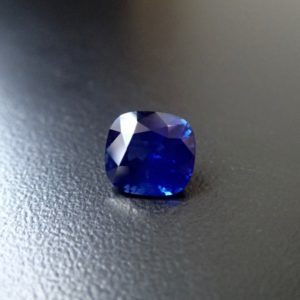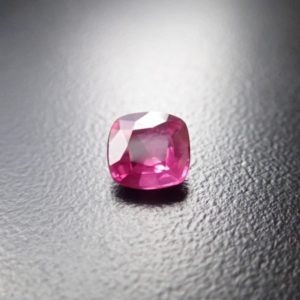Sapphire
Our Sapphire Collection
Treatment / Enhancement
Due to its durability and price, sapphires have many treatments.
Heating is the most common treatment used to increase transparency by dissolving small needle inclusions. Heating may also lighten the colors of over-saturated gemstones or turn purplish stones to a more desirable pink.
Diffusion is a technique that introduces a coloring agent to the gemstone by heating at a high temperature for an extended period of time, forcing beryllium or titanium into the molecular structure to change or dye the color of the gemstone.
Filling fissures and cavities with glass is done less frequently than with ruby, but is still practiced on more commercial stones.
Sapphire doublets were common until the 1950’s. These were frequently composed of blue glass on the pavilion and garnet on the table.
Synthetic sapphires were created at the beginning of the 20th century. Synthetic star sapphires have been manufactured since 1947.
Origin
The most valued sapphires come from Kashmir, a small section between India and Pakistan. Unfortunately, there have been no new discoveries in this area for many decades, but the blues from this region are soft, silky, and pure. Today, most of our fine sapphires come from Burma, Sri Lanka, Madagascar, and East Africa. Commercial (darker or more saturated sapphires) are mined in Australia Thailand, Cambodia, and India. In 1984 a sapphire deposit was discovered in Yogo, Montana. These gemstones are relatively small in size, but are of such beauty that they rarely require heat treatment.
Folklore
Sapphire derives its name from the Hebrew and Arabic word “safir,” meaning blue. Today all colors of gemstones in the corundum family are called sapphire except for ruby. Most sapphires are merely called by their colors, such as yellow sapphire, green sapphire, or pink sapphire. There is an exception with the lotus flower color (peachy, pink and orange) sapphires that are referred to as padparadschas, which are the rarest sapphires.


Care
Sapphires can usually be steam cleaned or put into the ultrasonic, but care should be taken when applying heat. If a sapphire has not been heat treated, there may be microscopic crystals near the surface. If these crystals are heated, they will expand and damage the gemstone severely. Boston Gems recommends that any heated sapphires be accompanied by a reputable gemological laboratory report.
